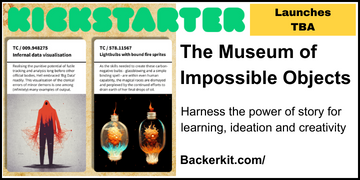
Games have long captivated our attention and motivated us to overcome challenges. In the realm of education, games-based learning and gamification have emerged as powerful tools to engage learners and enhance their language acquisition. Language learning is big business. According to PR Newswire, the global language learning market size in terms of revenue was worth of USD 59.60 Billion in 2021 and is expected to reach USD 191.06 Billion in 2028, so it makes sense for businesses offering language learning to keep people engaged, and not just for the benefit to the learner’s practice.
Benefits of Games-Based Learning for languages
Games have the innate ability to make learning enjoyable and immersive. Not only that, but play is the way we all acquired our first language, and the ‘rewards’ we will have received for learning well -social (parental) approval, ‘winning’ over our peers (by having more capability), and increased agency (to communicate), are very similar to well-designed gamification.
By integrating games into language instruction, educators can tap into several benefits. Firstly, games increase student engagement by transforming the learning experience into a dynamic and interactive adventure. Learners become active participants, eagerly exploring linguistic challenges and developing their language skills. Furthermore, games promote motivation by providing clear goals, feedback loops, and a sense of achievement, spurring learners to persist and progress.
For instance, language learning apps like Duolingo and Memrise employ game mechanics to make the process fun and rewarding. These gamified platforms leverage points, levels, and rewards to motivate learners and track their progress. Duolingo’s ‘streak’ mechanic is particularly effective at keeping players on board. There are reported instances of people taking breaks from their own wedding receptions, to ensure they do not spoil their lengthy streak. You can read an analysis of Duolingo’s gamification (albeit from a few years ago) by Dirk van Diepen of Octalysis at https://ludogogy.co.uk/article/duolingo-review-how-to-apply-gamification-smarter/
Gamification Techniques in Language Learning
Platforms like FluentU and Rosetta Stone adopt gamification elements, but are sometimes criticised for relying too heavily on extrinsic motivation, and using simplistic mechanisms like points, badges and leaderboards.

So what does good gamification look like, and how could it be employed beyond digital apps, in say, face-to-face learning settings? Here are some ideas.
- Quests and Missions: Designing language learning activities as quests or missions, where challenges are represented by milestones or levels, creates a sense of progress and achievement.
- Storytelling and Role-Playing: Integrating narrative elements into language learning, encourages the exercise of creativity, which in turn can give a sense of ownership and relevance to the content
- Collaborative Challenges: Foster collaboration and teamwork by introducing group challenges or competitions. This encourages students to work together, communicate in the target language, and support each other’s learning.
- Immersive Technology (or scenarios): Utilize interactive technology tools to enhance language learning. For instance, virtual reality (VR) or augmented reality (AR) can create immersive language environments, allowing students to virtually explore foreign cities or engage in language-specific scenarios.
- Story-based Progression: Frame language learning as a story-based progression, where students unlock new chapters or levels as they acquire new language skills. Each chapter can present them with challenges or tasks that require the application of their language knowledge. This approach adds a narrative element and keeps learners engaged and motivated.
- Time-based Challenges: Set time-based challenges or competitions where students race against the clock to complete language-related tasks or exercises. This injects an element of urgency and excitement into the learning process, motivating students to think quickly and apply their language skills under pressure.
Remember, when gamifying language learning in the classroom, it’s crucial to align the gamification elements with the curriculum objectives and ensure that they support language acquisition. The beating of ‘the game’ must not get in the way.
Speaking and Listening Skills through Interactive Scenarios
One powerful application of games-based learning is the improvement of speaking and listening skills. Immersive game scenarios provide learners with authentic contexts to practice their language skills. Through interactive dialogue options, voice recognition, and role-playing, learners can simulate real-life conversations. Language learning games like Lingua.ly (now defunct) and Tell Me More enable learners to engage in virtual conversations with virtual characters, enhancing their speaking and listening abilities. Such interactive game scenarios foster confidence, fluency, and cultural understanding. However, they can sometimes be let down by the technology they use, with some users reporting poor speech recognition among other problems.
Reinforcing Grammar and Vocabulary through Gamified Exercises
Games-based learning and gamification offer innovative ways to reinforce grammar and vocabulary acquisition. Language learners often find grammar exercises dull and monotonous. However, by transforming these exercises into gamified activities, learners can actively engage with language rules and structures. Platforms like Kahoot! employ interactive quizzes, timed challenges, and rewards to make grammar and vocabulary practice enjoyable. Gamified exercises not only consolidate language knowledge but also provide immediate feedback, allowing learners to identify areas for improvement and track their progress.
Cultural Understanding and Language Immersion – Virtual Worlds & Simulations
Language learning is not solely about vocabulary and grammar; it also involves understanding cultures and communities. Virtual worlds and simulations offer immersive environments where learners can explore different cultural contexts while practicing their language skills. Platforms like Second Life got on board early,although it is unclear whether this platform is still used much for language learning and Cambridge International (exam board) among others have designed immersive language learning environments in Minecraft Education Edition. These experiences promote cross-cultural awareness, enhance language comprehension, and facilitate authentic communication. CultureAlley, when it started, took a different approach to immersion, taking its cue for the vocabulary you want to learn from what was written on your Facebook wall. It’s offering now includes live classes, many different games, and is embracing the opportunities of AI.
AI is probably going to be revolutionary in the way it impacts learning in the next months and years.
Some more examples of language learning games
WordBrewery: This game focused (the project has, sadly, closed) on vocabulary acquisition by presenting learners with sentences from real-world sources, such as news articles or literature. Players must identify and understand the meaning of unfamiliar words in context, gradually expanding their vocabulary while enjoying the game’s immersive interface.
Muzzy BBC: Designed for young language learners, Muzzy BBC combines captivating, animated stories with interactive language learning activities. Children can engage with the characters, explore different language environments, and practice vocabulary, listening, and comprehension skills.

Language Guardians: a family card game for all ages, this can be played in whatever language is chosen for a particular session. Playing a bit like Uno, it works to help language acquisition through repetition and practice and through challenge and social learning.
LingoBee: LingoBee is a mobile app that utilises crowdsourcing and social networking to gather material for ’situated’ language learning from its users. So learners are exposed to curated material, and can comment and rate that material, and learn from each other in relevant contexts.
Language Hunters: This interactive game combines language learning with cultural immersion. Language Hunters employ traditional games and activities to teach (and preserve) indigenous languages, emphasizing oral communication and community engagement. Players learn by actively engaging in conversations, imitating sounds, and playing language-based games.
Limitations and Challenges
While games-based learning and gamification offer exciting opportunities, it’s essential to be aware of potential limitations and challenges. Firstly, selecting appropriate games and gamified elements aligned with learning objectives can be a complex task. Educators must ensure that games facilitate language acquisition rather than distract from it. Additionally, technical limitations, such as the availability of devices or internet connectivity, can pose challenges for implementing games-based learning and gamification, especially in resource-constrained environments. Moreover, measuring the effectiveness of games-based learning can be challenging, as it requires robust assessment methods that go beyond traditional exams or quizzes. Assessing language proficiency and progress within game-based contexts may require innovative evaluation approaches.
Despite these challenges, the benefits of games-based learning and gamification in language teaching are undeniable. They have the potential to transform language learning experiences, engage learners on a deeper level, and foster a love for languages. By embracing these approaches, educators, learning designers, and workplace learning facilitators can create dynamic and interactive language learning environments that resonate with their students.
To Conclude
Games-based learning and gamification provide a fresh and effective approach to language teaching and learning. By harnessing the power of games, educators can captivate learners’ attention, enhance motivation, and promote active participation. Whether through dedicated language learning games or the gamification of traditional language exercises, games offer unique opportunities to reinforce grammar, vocabulary, speaking, listening, and cultural understanding.
- James Bore – The Ransomeware Game - 13th February 2024
- Ipsodeckso – Risky Business - 23rd January 2024
- Review – Luma World Games - 15th December 2023







Be the first to comment